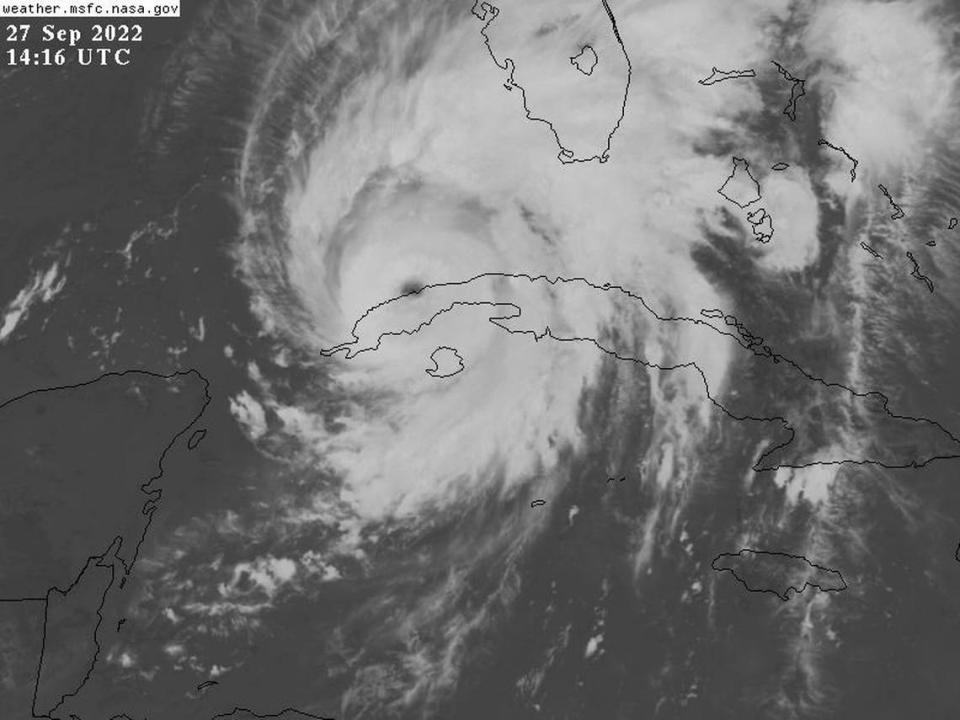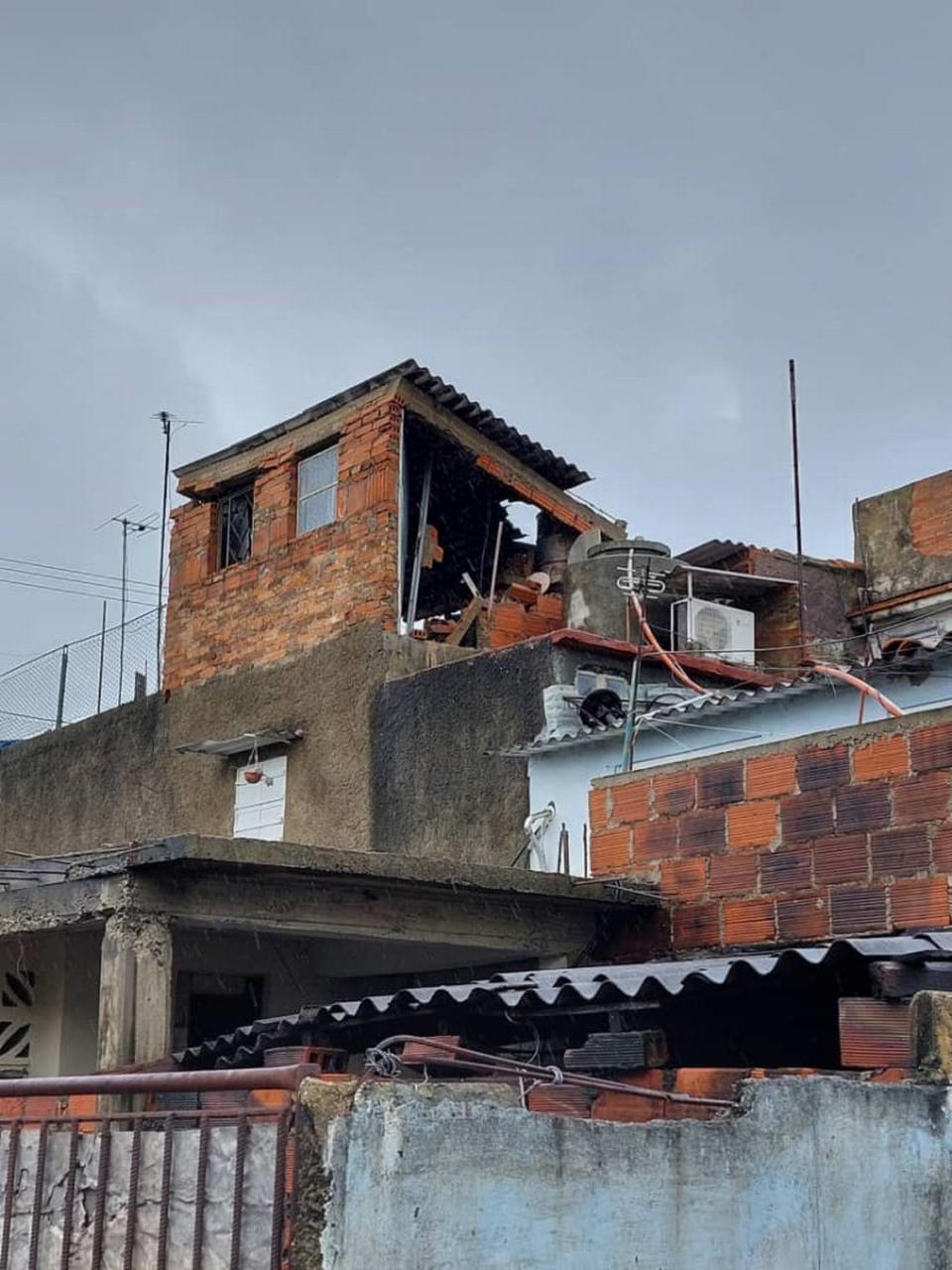‘Hours of terror’ in Cuba after Ian: Millions without power, massive floods, homes destroyed
A damaged hospital, destroyed homes, downed trees and power poles, and towns where residents wade through waist-deep water. Those are some of the images coming out of Cuba in the aftermath of the destruction left by Category 3 Hurricane Ian, which battered the island’s westernmost provinces Tuesday.
Late in the day, more than a million residents in the provinces of Pinar del Río and Artemisa also had no electricity, Cuba’s state media outlet reported. Cuba’s power company suspended the service in most of Havana, where strong gusts of wind were still being felt in the afternoon.
By late evening, millions on the island were in the dark, Reuters reported. Lázaro Guerra, Technical Director of the Electric Union of Cuba, said the utility would work through the night to restore power to the nation’s fragile power grid, according to the wire service.
“It has been a terrible morning,” Yoandy Izquierdo Toledo, an activist from the independent Convivencia Center, based in the westernmost province of Pinar del Río, told el Nuevo Herald.
“Communication is very difficult, landline and mobile phone services are interrupted,” he said in WhatsApp messages he managed to send.

“Desolation and destruction, we lived hours of terror; nothing is left here,” said the father of state journalist Lazaro Manuel Alonso who lives in Pinar del Río, according to Alonso’s post on Facebook.

When communications started to improve in the afternoon, Izquierdo began to hear from relatives in other towns in Pinar del Río. Some lost their home roofs. A wall fell in the house of one of his aunts. A cousin lost a balcony.
He also said some of the province’s churches suffered some damage.
He still hasn’t heard from his parents and sister, who live on a farm in the countryside.
“First there is a hurricane of great intensity and then the quality of the houses is terrible, so it is known that they will not withstand the winds,” Izquierdo said. “The wind felt super strong since three in the morning; it sounded like a wolf. I think there will be horror stories, everyone talks about a lot of damage.”

Ian made landfall around 3:25 a.m. in the town of La Coloma, on the province’s southern coast, after its center passed near the Isle of Youth, Cuban state media reported. At 5 a.m. Ian’s center was just five miles south of the city of Pinar del Río, with sustained winds of 125 mph, the National Hurricane Center said. The hurricane crossed over the province and by 11 a.m. it had emerged over the Gulf of Mexico, according to the center’s advisory.
The National Hurricane Center also warned of “life-threatening storm surge” in western Cuba. Cuban authorities had ordered the evacuation of 50,000 people in Pinar del Río but relied mostly on residents taking shelter with relatives and friends.
Videos published on Facebook by Carmen Pino, a Cuban living in Tampa who told the Herald her family lives in La Coloma, show her father, 99-year-old Jesús María Pino Alemán, who suffers from cancer, sitting in a rocking chair in his living room with water up to his waist. In one of the videos, another relative is chest-deep in water.
“Where is the government that should help my people?” she asked on Facebook. “I hold the incompetent and failed Cuban government responsible for the lives of more than 6,000 residents in the small fishing village of La Coloma south of Pinar del Río, who have been abandoned to their luck.”
Así amanece hoy la ciudad de #PinardelRío tras el impacto del #HuracánIan. pic.twitter.com/obWJ7941yR
— TelePinar (@TelePinar) September 27, 2022
Images published on state media show fallen trees and damaged buildings in Pinar del Río and Isle of Youth. There are reports of flooding in the Pinar del Río towns of San Juan y Martínez and Puerto Esperanza, and damage to tobacco crops.
The Finca El Pinar, a renowned tobacco farm belonging to the Robaina family with a history that goes back to the 19th century, suffered severe damage. Its owner, Hibachi Robaina, described the situation as “apocalyptic, a real disaster.”
Rotceh Hernández, from Pinar del Río, also shared photos of the town of San Juan y Martínez on her Facebook profile, showing houses that have lost their roofs and streets filled with debris.
“The town of San Juan y Martínez lost almost everything. How sad,” Hernández said.
Damages to Pinar del Río’s main Abel Santamaría hospital were so great that its director said it must shut down. Local channel Tele Pinar reported that the strong winds knocked down three light towers at the city’s baseball stadium.
Pinar del Río painter Arquímides Nelo Lores, who has taken inspiration from the city of Pinar del Río in his work, said that his house and some of his paintings suffered damage.
“Tears run down my face,” he said on Facebook, alongside photos of fallen poles, roofs, and water-damaged belongings.

State media also reported storm-surge flooding of some coastal towns in the province of Artemisa. And in the capital, the Defense Council in Old Havana said 4,000 needed to evacuate because they lived too close to the famed Malecón seawall.
Asked about the damages, General Ramón Pardo Guerra, the head of Cuba’s Civil Defense, said it was too early to tell. Clad in military fatigues, the island’s leader, Miguel Díaz-Canel, arrived in Pinar del Río in the afternoon, where he greeted some residents and told them: “It is tough but we will keep on going.”
On Monday, several prominent Cubans and Cuban Americans signed a petition asking the heads of Meliá Hotels International, Iberostar, Kempinski, NH Hotel Group and other foreign hotel chains operating in Cuba to “make room for Cuban families, most of them with children, who will be left destitute and homeless as a result of Ian.”
Cuban activist Rosa María Payá, musician Paquito de Rivera, Modesto Maidique, former president of Florida International University, and the Reverend Jose Conrado of the Parish of Trinidad in Cuba, led the appeal.
The powerful storm comes at a difficult time for Cuba, engulfed in the worst economic crisis since the 1990s. Food and medicine shortages and electricity blackouts mark daily life, a situation made worse by a dengue epidemic.


